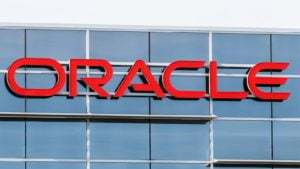
Over the past year, some of the top AI data center stocks have been about as hot as the GPU makers themselves. Booming demand for AI computing brings forth greater demand for AI chips, which, in turn, means more AI-ready data centers are going to need to be constructed.
Indeed, many investors have recognized that data center stocks are a more “downstream” way to play the AI boom.
That’s why data center companies like Super Micro Computer (NASDAQ:SMCI) have been able to come from seemingly out of nowhere in just the past year and a half. The growth to be had in the data center plays has been scorching, and it’s really tough to tell when the tides will reverse until the GPU makers themselves exhibit some form of weakness.
In this piece, we’ll check out three data center stocks that have been exhibiting volatility but may be far from rolling over.
Super Micro Computer (SMCI)

First, we have the great Super Micro Computer, which began looking “toppy” after the rocky sell-off it suffered back in March and April. After doubling up many times over in the past two years (shares up over 1,800% in that span), such a double-digit percentage plunge is surely startling for latecomers to SMCI stock.
In the grander scheme of things, though, this pullback may be more of an opportunity than a “run off the cliff” moment, especially as some investors sell over the fear of sheer volatility and the potential bear-case scenario downside if AI demand were suddenly to run into a wall.
Unless you believe the AI boom is well past mid-cycle, perhaps the stock chart itself is the primary source of anxiety because the valuation does not look all too outlandish at these levels. With the potential for AI demand to stay strong in the second half, SMCI stock may still have what it takes to recover from a multi-month period of painful price action.
Looking ahead, expect Super Micro to double down on what differentiates itself from the pack. Whether it’s the liquid cooling tech to take the heat off blistering-hot GPUs or the Super Micro’s “building block” architecture of designing servers, the data center firm seems to have a moat that’s quite wide.
Vertiv (VRT)

Vertiv (NYSE:VRT) is another digital infrastructure play that’s been on a blistering run, just like Super Micro.
Year to date, VRT stock hasn’t been nearly as hot as SMCI, up just over 100% versus SMCI stock’s nearly 200% gain. Despite trailing Super Micro in performance, Vertiv still looks considerably more expensive at 38.1 times forward price-to-earnings (P/E) versus 22.9 times for Super Micro.
Vertiv stands to benefit from the same AI tailwinds as Super Micro Computer, but with a more diversified business that spans well beyond the data center, Vertiv may be better able to hold its own in the face of a mid-cycle AI chip demand cool-off, which will happen at some point.
Additionally, thermal management stands out as a competitive differentiator, according to analysts over at Oppenheimer. If you seek diversification and AI data center upside, perhaps the premium on VRT stock is worth paying.
Oracle (ORCL)

Oracle (NASDAQ:ORCL) is a sizeable tech juggernaut that has been “flooring it” when it comes to data center expansion. The company is reportedly constructing 100 new data centers worldwide while expanding upon 66 existing ones. As a large $383 billion company with deep pockets, Oracle has the financial firepower to make a really deep dive into this AI boom.
More intriguingly, the company also has what it takes to power all of its data centers with 100% renewable sources of energy by 2025. That’s a seriously impressive renewable energy promise and one that could help separate it from the pack. Indeed, if there’s a firm that could hit the ambitious target, it’s Oracle.
Combined with Oracle’s cloud and AI tech talent and Oracle may be the top blue-chip way to play the data center boom for the long term. At 22.2 times forward P/E, ORCL stock certainly looks like one of the cheapest of the pack.
On the date of publication, Joey Frenette did not hold (either directly or indirectly) any positions in the securities mentioned in this article. The opinions expressed in this article are those of the writer, subject to the InvestorPlace.com Publishing Guidelines.





